Dogs produce an average of 400-800mL of urine per day, most of which is going in our backyard. Are all of us dog lovers destined to have hideous, patchy lawns for all eternity or is there an easy fix we could implement to help our lawns stay green?
What is nitrogen and why is it in dog pee?
Nitrogen is an essential nutrient for plants, animals, and humans. Although the air we breathe is around 78% nitrogen, the gas form is hard for us (and your dog) to utilize in the body. Instead, we use a compound version of nitrogen that be obtained when ingesting protein.
In most if not all mammals, when protein is consumed (from meat, dairy, etc.), it is broken down into amino acids that will support any number of systems such as Muscular, Integumentary (skin), Cardiovascular, as well as hair and nail growth. The process produces the byproduct ammonia, which then forms with carbon dioxide to produce urea, a nitrogenous compound. The remaining nitrogen is eventually filtered out through the kidneys and discharged within the urine.
Urine (whether human or canine) contains about 95% water while just 5% contains added solutes that include nitrogen – as well as phosphorous, and potassium. Although the ratios can differ due to the diet and size of the animal, the general chemical structure is quite similar to what you’d find in store-bought fertilizer.
So why is nitrogen in fertilizer good and nitrogen in urine is supposedly bad? The idea is when it comes to gardening, whenever you have too much of something, it can cause a depletion in something else. So if too much nitrogen in the soil, it can cause other vital minerals such as calcium, phosphorus, and magnesium to decrease.
Unhappy dog owners blame their pup for dispensing heavily concentrated nitrogen in one area as oppose to fertilizer which can be evenly spread in a controlled fashion.
What if you could get your soil to properly distribute, and utilize your dog’s urine? In our opinion, one of the the best ways to avoid yellow spots is to maintain a healthy and thriving lawn that can handle the amount of pee your pup puts out on a daily basis. Learn how in our article, 5 Steps to Maintain a Healthy Lawn That Can Withstand Your Dog’s Urine.
Is There a Way to Lower Nitrogen Levels in My Dog’s Pee?
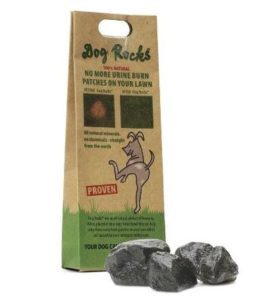 The pet product industry has caught wind of this shared desire for less nitrogen from their pet, and a few products have come out on the market. One of the more popular items are called Dog Rocks – actual Australian rocks that are sold for the sole purpose of lowering the nitrogen in your dog’s pee, thus avoiding those nasty burnt patches that are assumed to be the result of that.
The pet product industry has caught wind of this shared desire for less nitrogen from their pet, and a few products have come out on the market. One of the more popular items are called Dog Rocks – actual Australian rocks that are sold for the sole purpose of lowering the nitrogen in your dog’s pee, thus avoiding those nasty burnt patches that are assumed to be the result of that.
How does it work? The idea behind this is that the rocks are paramagnetic (meaning slightly magnetic) – and will attract and absorb certain impurities such as tin, ammonia and nitrates (the water soluble form of nitrogen) that is typically found in tap water. While arguably most if not all rocks have some level of paramagnetism, Dog Rocks say they are “used by over a million dog owners worldwide to help stop pet urine from burning their grass.”
Here’s where their pseudoscience gets a little hairy. To start, the average level of nitrates in our drinking water is relatively low. The Environmental Protection Agency moderates a maximum nitrate capacity of 10mg/Liter. Since a liter of water weighs 1,000,000 milligrams, we are really talking a mere 0.001% of your tap water could contain nitrates. Secondly, as discussed earlier, the majority of nitrogen found in urine comes from metabolizing protein, a natural process that cannot and should not be avoided.
So rocks might not be the answer, but there could be a way to slightly lower the amount of nitrogen that your dog is outputting. You may think to have your dog drink more water in order to dilute the nitrogen levels, but with your dog’s urine already being 95% water, I doubt it would have that much of an effect. Your best bet is to look into a new pet food brand that has a lower protein content – less protein means less nitrogen produced. You may want to talk it over with your vet first, but this could be an appropriate choice especially if your dog’s has a generally low activity level.
Can I lower the acidity or change the pH balance in my dog’s urine?
It’s actually a common misconception that the burnt appearance of your grass could be due to high acidity levels in your dog’s urine. The truth is that the pH of urine in an average healthy dog is only slightly acidic, to a point where it should have little to no effect on the color of your grass.
If you are unfamiliar with the pH scale, it is a way to determine the degree of acidity and alkalinity from 0-14, with anything lower than 7 being deemed acidic and anything above 7 is considered alkaline (7 being a neutral balance). Here’s the interesting part – the average healthy dog is going to have a pH balance around 6.5, which just so happens to be around the ideal pH level in a healthy lawn.
Against popular belief, if there is an issue with your dog’s pH level, it would most likely because it is too alkaline meaning more acidity needs to be added to their diet. It is possible that if your dog’s pH was above 7, the urine could be producing salt, which can dehydrate the roots and that can be the reason why your grass has stopped growing in some areas.
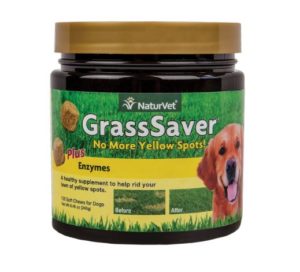 There is a dog supplement on the market called GrassSaver (manufactured by NaturVet) that is meant to increase the acidity in your dog’s urine. GrassSaver’s main ingredient is Methionine, which is naturally found in meat and fish products. Methionine is an essential amino acid that is essential to your dog’s overall health and aids in their eyesight, heart functions and quality of their coat. Although it is good for your dog in the appropriate amounts, too much can cause problems.
There is a dog supplement on the market called GrassSaver (manufactured by NaturVet) that is meant to increase the acidity in your dog’s urine. GrassSaver’s main ingredient is Methionine, which is naturally found in meat and fish products. Methionine is an essential amino acid that is essential to your dog’s overall health and aids in their eyesight, heart functions and quality of their coat. Although it is good for your dog in the appropriate amounts, too much can cause problems.
Attempting to alter the pH of your dog’s urine could be dangerous if you have not met with the veterinarian to perform a urine test first. If your dog’s urine becomes alkaline, he will be more susceptible to urinary tract infections and struvite bladder stones. On the other hand, if your dog’s urine is too acidic, it can increase the chance of your dog developing oxalate bladder stones.
If your dog’s urine is found to be alkaline, your vet may want you to increase your dog’s water intake. This can be done by adding a low-sodium chicken broth to the water bowl, switching the diet to a high moisture brand, or by simply adding water to their food. Your dog may not need supplements or medication depending on the severity of the issue.
Is Dog Poop Good For The Lawn Too?
It is true that a certain percentage of nitrogen is released through the excretion process, however, it is not recommended to leave dog waste on the ground. Unlike urine (which is mostly water), dog waste is only 75% moisture, leaving the remaining 25% as solid waste, a much harder substance for the soil to absorb.
You may have noticed dog poop will cause a yellow or brown spot on the ground after being left out for a certain amount of time. This is because its dense matter will actually block out sunlight and trap in heat, killing the grass underneath.
Composting your dog waste might be an idea you’ve had where you would mix in carbon material to make a humus that could increase the soil’s ability to absorb and retain its nutrients. Unfortunately, due to a dog’s meat-eating diet, their waste is riddled with pathogens that is just not safe to keep nearby. Furthermore, the amount of compost produced from an average household is unlikely to reach a high enough temperature to kill whatever bacteria is lurking inside. Your best bet is to find an organization in your community willing to compost dog waste that will be handling a much higher volume and in a controlled environment.

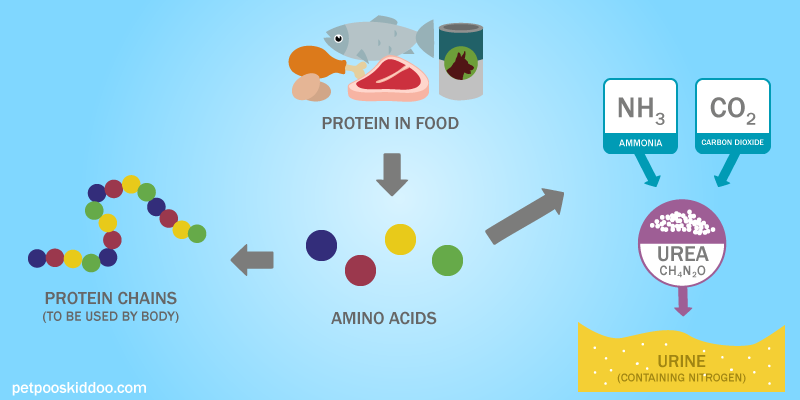
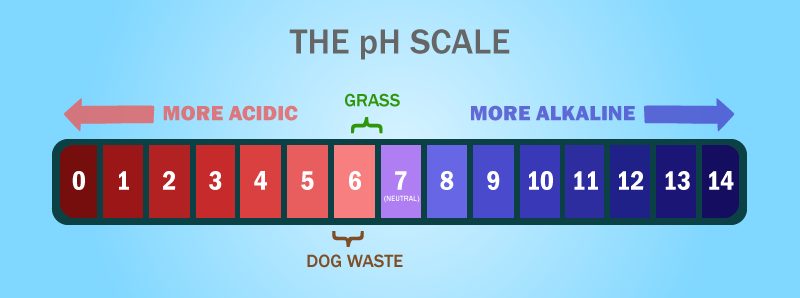
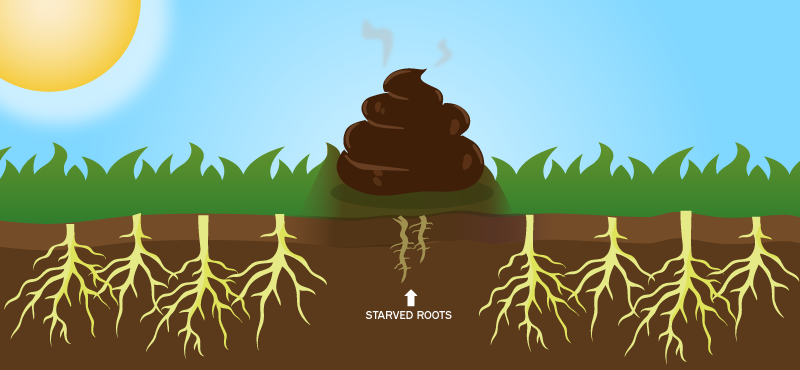
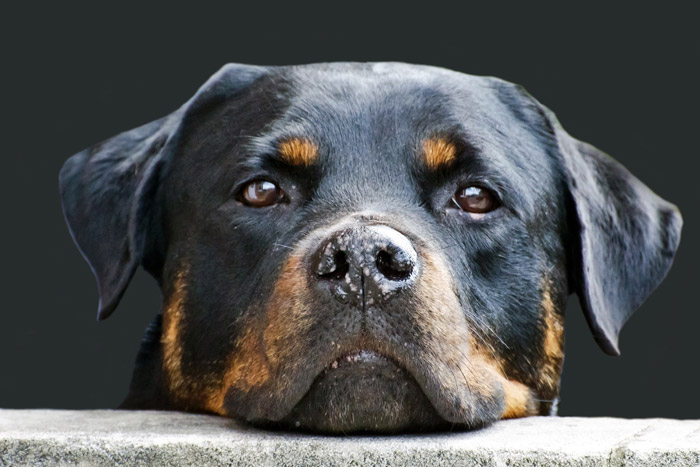 Treatments for Your Aging Dog’s Weakened Bladder
Treatments for Your Aging Dog’s Weakened Bladder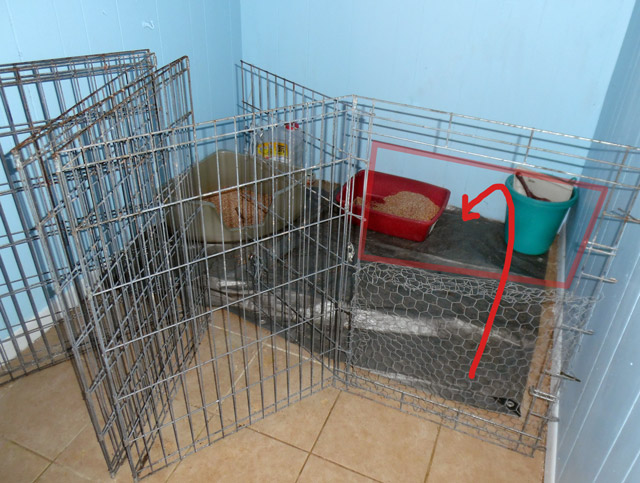 Stop your dog from eating kitty litter and his own poop!
Stop your dog from eating kitty litter and his own poop! How to make buyers think you never had pets in your home
How to make buyers think you never had pets in your home